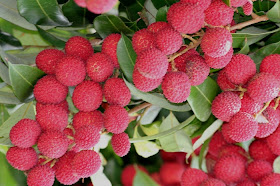When it comes to baking with pumpkin, sugar pumpkins, also known as pie pumpkins, have the best flavor. While Jack-o-lantern pumpkins are grown for their large shell, sugar pumpkins are grown for their flavorful insides. With a thicker shell, these types of pumpkins are delicious when baked and have the tasty flavor of their squash relatives.
For an alternative to the bread bowl, take advantage of the plentiful supply of sugar pumpkins available at grocery stores and farmers’ markets. When it comes to homemade soups and stews, sugar pumpkins make delicious and edible bowls without all the extra carbohydrates. Whether you are looking to add extra vegetables to your diet or simply looking for a way to add a decorative touch to your dinner table, be sure to add a few of these pumpkins to your shopping list.
Not only are sugar pumpkins a nice alternative to the festive fall dinnerware sold in stores right now, nothing beats the look of them on your table. After baking just until the inside of the pumpkin is tender, each individual pumpkin can be served as its own serving bowl. The baked pumpkin adds delicious flavor to the other ingredients inside and can be eaten just as you would baked squash. As cute, edible decorations, you might find that your children who otherwise wouldn’t eat squash as a side will eat these with their stew or soup.
Since stews and soups always taste better when heated the se
For an easy recipe to fill your sugar pumpkins with, the recipe for Beef Stew below is tasty and filling. Make sure, though, that you bake your pumpkin bowls on a large cookie sheet or jelly roll pan. Like many recipes made in my kitchen, I learned this one the hard way. After baking a large pumpkin filled with stew for way too long, three hours to be exact, the bottom of the pumpkin baked itself into my oven rack. After lifting up the large seventeen-pound pumpkin, the bottom broke away and broth from the stew spilled all over the bottom of the oven. Fortunately, a new idea was born out of this kitchen catastrophe. Thanks to my oldest daughter, the idea for the individual pumpkin bowls came about, becoming our newest and favorite way to bake our fall squash.
In keeping with a pumpkin-themed meal, delicious pumpkin desserts don’t come any easier than the recipe for the Pumpkin Sheet Cake below. Capable of being whipped up in minutes, the recipe below is one I’ve been making for years. As one of my kids’ favorite cakes, I make this one a lot throughout the fall and winter. Depending on the size of the crowd, this recipe can be halved for a standard baking pan or in a large jelly roll pan for a crowd of 25. Although some might prefer this cake served with pumpkin ale, some like myself will opt for the pumpkin spice latte. However, whatever your drink, three cheers to your next fall meal.
2 pounds beef stew meat
4 tablespoons olive oil, divided
6 cups water
4 beef bouillon cubes
1 can (14.5 oz.) diced tomatoes, not drained
4-6 medium potatoes, peeled and cut into 1-inch cubes
6 medium carrots, sliced
1 large sweet onion, diced
1 teaspoon pepper
1 teaspoon salt
6 sugar pumpkins
1) In a Dutch oven, brown meat in 2 tablespoons oil. Add water, bouillon, tomatoes, potatoes, carrots, onion, pepper, and salt.
2) Bring all ingredients to a boil. Cover and simmer until vegetables are tender.
3) Meanwhile, remove tops of pumpkins and set aside. Discard seeds and loose fibers from inside. Place pumpkins on a large cookie sheet. Scoop stew into pumpkins and replace the tops. Brush outside of pumpkins with remaining 2 tablespoons of oil.
4) Bake at 350 for 1 ½ hours or just until the inside of the pumpkins are tender (do not over-bake). Serve in bowls or plates.
Kitchen Tip: If you like extra broth, add an extra cup or two of water to the recipe for Pumpkin Stew above.
Pumpkin Sheet Cake (20-25 servings)
2 ¼ cups pumpkin puree
3 cups sugar
1 ½ cups oil
6 eggs, slightly beaten
3 cups flour
1 Tablespoon baking soda
1 Tablespoon ground cinnamon
½ teaspoon salt
1) In a mixing bowl, combine pumpkin, sugar, and oil. Beat in eggs. Add flour, baking soda, cinnamon and salt. Mix just until blended.
2) Pour batter into a greased 15 in. x 10 in. x 1 in. jelly roll pan. Bake at 350 for 40 minutes or until cake tests done. Cool completely.
Cream Cheese Frosting
8 oz. cream cheese, softened
5 cups confectioners’ sugar
3-4 Tablespoons milk
1 teaspoon vanilla
1) For frosting, beat cream cheese, sugar, milk, and vanilla.
2) Spread over cake.
Homemade Pumpkin Spice Latte (makes one tall latte)
1 cup milk
1 tablespoon canned pumpkin
1-2 teaspoons sugar
1 tablespoon vanilla extract
½ teaspoon cinnamon
½ cup strong coffee
1) In a saucepan, combine milk, pumpkin, and sugar. Cook over medium heat, stirring constantly until liquid is steaming. Remove from heat. Add vanilla and cinnamon. Whisk until thoroughly combined.
2) Pour pumpkin mixture into a large mug and add coffee. Top with whipped cream, if desired, and add a light sprinkling of cinnamon or nutmeg. Drink and enjoy!
About this column: In The Kitchen With Jodee brings you easy, economical recipes from Avon Lake's mom-of-eight, Jodee Brooks.



























